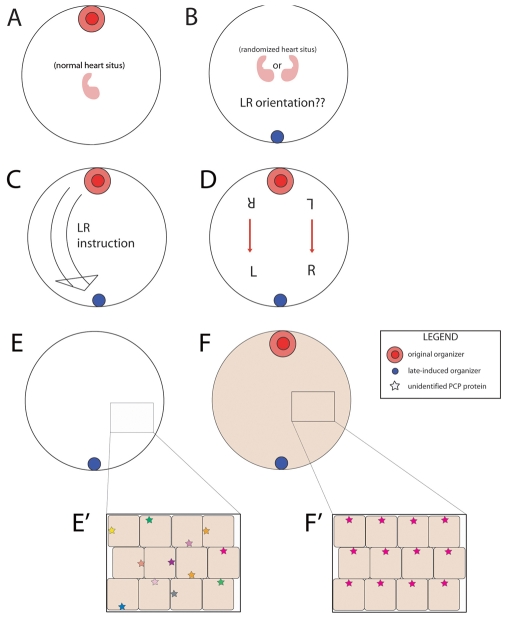Fig. 5.
A polarity model for the instructive influence exerted by an early-induced organizer upon late-induced twin axes. (A) Schematic of a single organizer in an unperturbed, normal embryo. (B) When the primary organizer is not present and an organizer is induced late, the LR orientation is randomized. (C) If an organizer is induced late in the presence of an endogenous early organizer, LR instruction is passed from the primary organizer to the late-forming organizer. (D) The new orientation of the LR axis cannot be due to leaky signaling from the primary axis because only the left and right halves of each twin are in contact to share a LR morphogen. (E) In an embryo lacking a primary organizer with a late-induced organizer, a PCP protein (indicated by stars) that normally points all cells ‘dorsal’ towards the organizer is distributed randomly (E′). (F) Using cytoplasmic mechanisms, an embryo with a primary organizer and a late-induced organizer can orient all cells in a coherent pattern (F′) that each organizer can use, in combination with its own local AP/DV direction, to derive a consistent LR axis.

